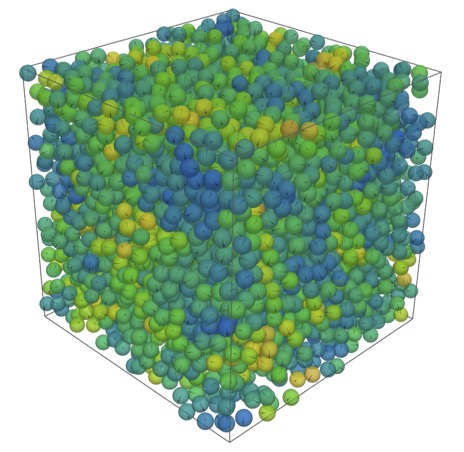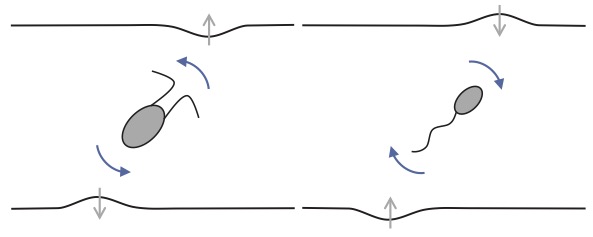Active Matter
Active matter is a term used to describe matter that is composed of a large number of self-propelled active ‘particles’. The interaction of many of these individual active particles with each other or their environment can lead to complex collective dynamics. Biological examples include a flock of birds, a school of fish, or at smaller scales a suspension of bacteria or even the collective motion within a human cell. The study of such active matter is important in many bio-related applications including: the design of synthetic materials (bioengineering), models of population dynamics (bioremediation), the control of biofilm formation (biomedical), and alternative energy production (biofuels). Understanding the dynamics of active matter systems can ultimately lead to the careful design and control of synthetic active matter allowing for applications such as autonomous chemical sensing or the targeted delivery of payloads by synthetic autonomous active particles. We have been developing mathematical models and fast numerical methods to describe dense active matter systems. This includes scenarios where there are many interacting autonomous active particles exhibiting collective dynamics in fluid environments that may contain complex heterogeneous microstructure.

Biophysics
We study the mechanics of bio-locomotion in fluids, studying how organisms swim in nature. Locomotive means in nature are often optimized to their surroundings and the idea is that by understanding how sperm swim through the female reproductive tract or sand snakes swim through granular media we can first, address biological observations but second, we can think about how to take ideas from nature to produce optimal designs in engineering for example, how to effectively design artificial microorganisms to move through the human body and perform activities such as targeted drug delivery.

Complex Fluids
In biology as well as in industry many fluids contain microstructure endowing in them non-Newtonian rheology. This complex behaviour affects how fluids flow but also how bodies interact with the flow, often yielding markedly different behaviour than Newtonian fluids. A primary interest of ours is trying to model locomotion and fluid-structure interactions in complex fluids.

